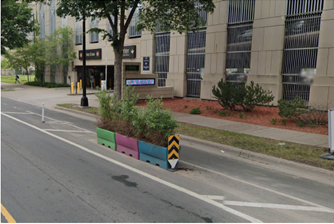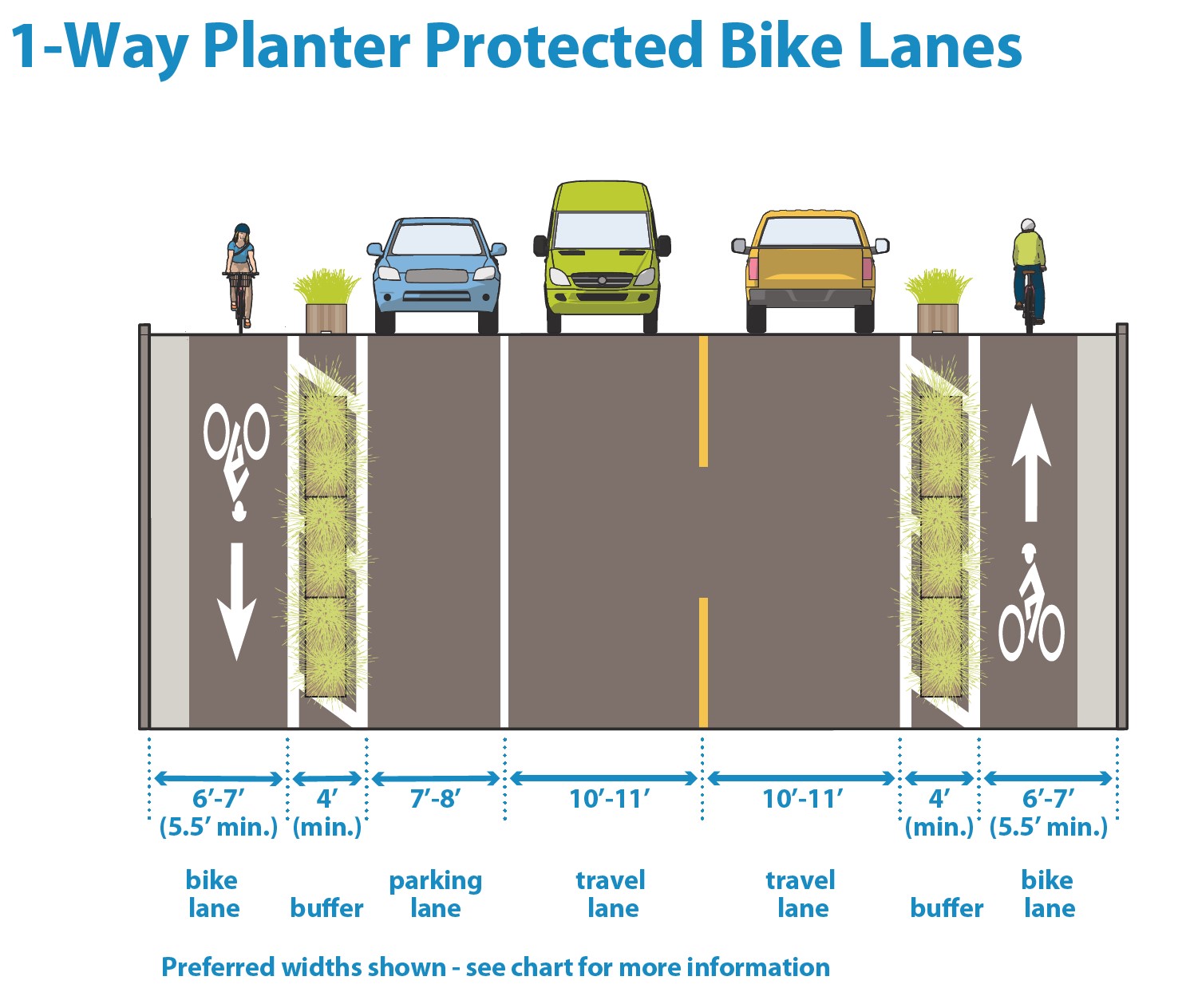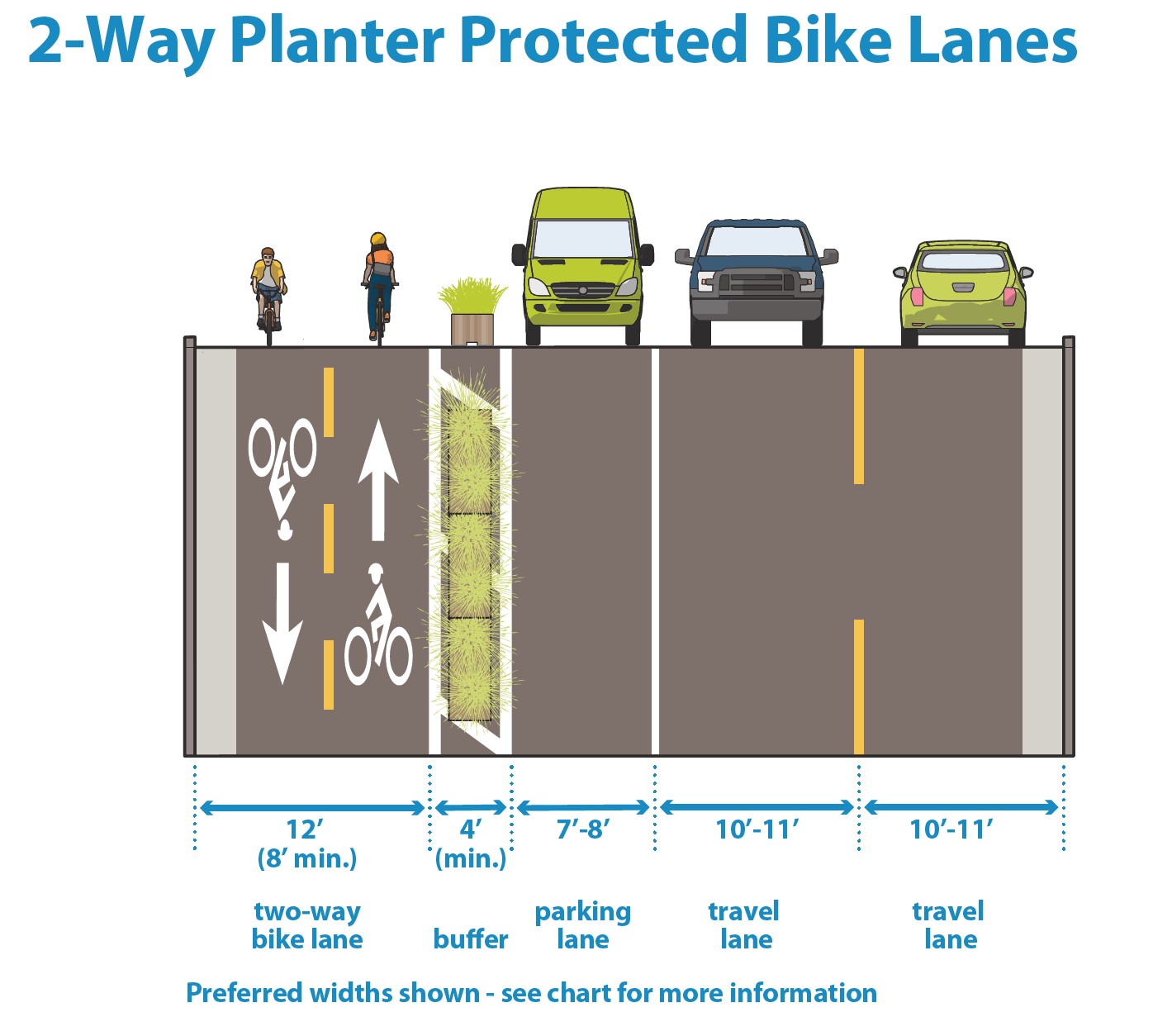3.4D Planter-protected bike lanes
Search Content
Download PDF
Print Guide
Introduction
Planters may also be implemented in the buffer space between the bikeway and travel lane as an aesthetically pleasing means to provide physical separation from motorized traffic. Planters are typically implemented as an upgrade to unprotected or delineator-protected bike lanes. The considerations in this section build on the guidance for delineator-protected bike lanes, which should serve as the starting point for any in-street curb-protected bikeway.

Planter-protected Bikeways on 3rd Ave
Figure 3.4D.1:
Planter-protected bike lane dimensions table
Figure 3.4D.2:
Planter-protected bike lane dimensions graphic
Design Considerations
|
Operation |
Planter-protected bike lanes may be designed for one-way or two-way bicycle traffic. |
|
Gutter pan considerations |
Delineator-protected bike lanes directly adjacent to the curb should generally include a minimum of 4 feet of smooth, ridable surface, excluding any adjacent gutter pan. In very constrained right of way where every consideration has been taken to narrow roadway street zones, 3.5’ of smooth, ridable surface can be used for short stretches. |
|
Planter spacing |
Planters should be centered in the buffer area and spaced at 10’ to 30’ increments with closer spacing where vehicular encroachment into the bike lane is anticipated. |
|
Signage |
Type-3 object markers should be installed on or near the end of each planter oriented towards the adjacent travel lane to improve visibility. |
|
Plastic delineators |
Plastic delineators should augment planter-protected bikeways and should be installed in the center of the buffer area at regular increments in the gaps between planters. |
|
Full street reconstructions |
Permanent planters or planted boulevards should be used to physically separate the bikeway from motorized traffic during full street reconstructions. |
|
Bike lane dimensions |
Should include a minimum of 4 feet of smooth, ridable surface, excluding any adjacent gutter pan. |
|
Buffer width |
While planter width varies, a minimum buffer width of 4’ should be assumed for adequate clearance, and a minimum of 1’ clearance should be maintained from the planters to the adjacent travel lane and the bikeway operating space. |
|
Planter dimensions |
Planters may range in height from 22” to 36” (not including the plantings). To maintain adequate sightlines, planters should not be located within 30’ of intersection approaches, or within 20’ of approaching driveways, alleys, or any vehicular mixing/conflict zones. |
|
Maintenance |
|
|
Parking lane considerations |
Parking lanes adjacent to planter-protected bikeways should be located between the bike lane buffer and travel lane, and a minimum bikeway buffer width of 4’ should be assumed. To allow access across the bikeway from the parking lanes, 6’ gaps in planter spacing should be assumed at the ends of each parking stall. In areas with high parking utilization, it may be helpful to stripe parking stalls to maximize parking efficiency. |
|
ADA considerations |
Designers should implement strategies to support ADA access to parking spots, bus stops, and Metro Mobility drop off points along protected bike lanes. Additional details will be forthcoming in a future update to the Street Design Guide. |
|
Intersection guidance |
See also bikeway intersection design guidance. |






